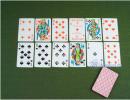Calorie content Turkey, breasts, meat. Chemical composition and nutritional value
Turkey calories: 180 kcal.*
* average value per 100 grams, depends on the part of the carcass and the cooking method
Turkey meat is a product that should be on the menu of everyone who wants to get rid of extra pounds. Turkey meat has a high content of nutrients and a small amount of fat.
How many calories are in turkey
The benefits of turkey for the body are due to its beneficial effect on the digestive system, the absence of the likelihood of allergies, the ability to maintain strength for a long time and at the same time not burden the stomach and intestines. Therefore, the product is recommended for use during recovery from many pathologies.
Poultry contains a minimum of carbohydrates and cholesterol. Even when preparing dishes from the fattest parts, you should not worry about your figure.
The product is recommended for athletes and those who want to emphasize muscle definition. The nutritional value of different parts of meat differs slightly. The calorie content of breast per 100 g is less than 90 kcal. This part is considered the most dietary. The values are slightly higher in the bird’s drumstick and thigh (~ 130 kcal). The most fat is found in the legs, wings and skin. In the latter case, the value is about 390 kcal.
Turkey fried, boiled, baked
The energy value may vary depending on what kind of meat is chosen (red or white), as well as on the method of heat treatment. This should be taken into account when dieting. Boiled turkey fillet has the lowest calorie content - about 130 kcal, and steamed turkey fillet - only 90 kcal. Stewing and baking are also the best ways to prepare meat when creating a healthy diet (120 and 160 kcal, respectively).
Fried turkey with a calorie content of 165 kcal can be included in the menu when losing weight, but in small quantities.
Nutritionists advise making poultry cutlets, quenelles and zraza, since the value of the finished dish does not exceed 150 kcal. White poultry meat without skin is an excellent source of energy for active people: digestion slows down and the feeling of fullness remains for a long time. Compare with from our publication.
Calorie content of minced meat, liver and broth
Of all turkey by-products, poultry liver has the highest calorie content - about 276 kcal. If we consider the minced meat indicator, then when using fillet the calorie content will be insignificant - no more than 200 kcal. It is best to choose for further grinding only fresh meat with a pleasant smell, pink color and strong structure.
The calorie content of turkey broth is only 30 kcal, so you can safely prepare soups based on it while on a diet. At the same time, the product contains a large amount of protein. For cooking, it is recommended to use wings, but not entirely, but only some of them, so that the dish is not heavy.
Calorie table per 100 grams
A detailed table of caloric content per 100 g will help you determine with maximum accuracy what the nutritional value of different parts of poultry meat is when drawing up a dietary menu.

The possibility of frequent consumption of the product in question is due to its low fat content. The good digestibility of poultry meat, nutritional value and pleasant taste make it indispensable for weight loss.
Turkey, breasts, meat [PRODUCT REMOVED] rich in vitamins and minerals such as: vitamin B2 - 17.8%, choline - 13.3%, potassium - 12.1%, phosphorus - 20.3%, selenium - 41.5%, zinc - 11.1%
What are the benefits of Turkey, breasts, meat [PRODUCT REMOVED]
- Vitamin B2 participates in redox reactions, helps to increase the color sensitivity of the visual analyzer and dark adaptation. Insufficient intake of vitamin B2 is accompanied by impaired condition of the skin, mucous membranes, and impaired light and twilight vision.
- Kholin is part of lecithin, plays a role in the synthesis and metabolism of phospholipids in the liver, is a source of free methyl groups, and acts as a lipotropic factor.
- Potassium is the main intracellular ion that takes part in the regulation of water, acid and electrolyte balance, participates in the processes of conducting nerve impulses and regulating pressure.
- Phosphorus takes part in many physiological processes, including energy metabolism, regulates acid-base balance, is part of phospholipids, nucleotides and nucleic acids, and is necessary for the mineralization of bones and teeth. Deficiency leads to anorexia, anemia, and rickets.
- Selenium- an essential element of the antioxidant defense system of the human body, has an immunomodulatory effect, participates in the regulation of the action of thyroid hormones. Deficiency leads to Kashin-Beck disease (osteoarthritis with multiple deformities of the joints, spine and limbs), Keshan disease (endemic myocardiopathy), and hereditary thrombasthenia.
- Zinc is part of more than 300 enzymes, participates in the processes of synthesis and breakdown of carbohydrates, proteins, fats, nucleic acids and in the regulation of the expression of a number of genes. Insufficient consumption leads to anemia, secondary immunodeficiency, liver cirrhosis, sexual dysfunction, and the presence of fetal malformations. Research in recent years has revealed the ability of high doses of zinc to disrupt the absorption of copper and thereby contribute to the development of anemia.
You can see a complete guide to the most useful products in the appendix.
Turkey is most loved in America and Europe, and its popularity is not only due to its delicate taste, but also its nutritional value. In addition, this is the bird served on Thanksgiving Day. Poultry meat is considered dietary and has a glycemic index of “0”. In addition, it rarely causes allergic reactions.
Composition and nutritional value
Turkey contains a large amount of protein. At the same time, it is low in cholesterol and fat and completely free of carbohydrates. Poultry meat is a source of minerals (phosphorus, iron, selenium), vitamins B1-B6, B9, B12, A, E, D, C, PP. The BJU of a whole bird, calculated per 100 grams of product, is 20.46/5.87/1.56 g. The figures differ in different zones.
Components:
Legs - 15.7/8.9/0, g
Boiled - 25.3/10.4/0.0 g
Breast - 19.2/0.7/0.0 g
Minced meat - 20.0/8.0/0.5 g.
Skin - 12.7/36.9/0.0 g.
Wings - 16.5/11.4/0.0 g.
Ham - 18.4/6.4/0.0 g.
By-products:
Stomachs - 20.0/7.0/0.0 g.
Liver - 19.5/22.0/0.0 g.
Heart - 16.0/5.1/0.4 g
Cooking:
Boiled fillet - 25./1.0/0.0 g
Baked turkey - 17.4/2.6/2.3 g.
Stewed with vegetables - 3.3/1.1/8.7 g.
Fillet in mustard sauce - 13.4/3.0/2.9 g.
Turkey in the oven with tomatoes - 14.7/0.6/1.3 g.
Fried - 28.0/6.0/0.0 g.
How many calories are in turkey
The average calorie content of a turkey is 276 kcal per 100 grams of product. But it has the fattest parts, so their calorie content is different. Let's look at some options.
Individual parts:
Legs -142.0
Boiled - 195.0 kcal
Breast - 84.0
Minced meat - 161.0 kcal.
Leather - 387.0 units.
Wings - 168.0 kcal.
Ham - 131.0 units.
By-products:
Stomachs - 143.0 kcal.
Liver - 276.0 kcal
Heart - 128 units.
Dishes:
Boiled fillet - 130 kcal
Baked poultry - 103.0 kcal.
Stewed with vegetables - 57.0 units.
Poultry fillet in mustard sauce - 92.0 kcal.
Poultry in the oven - 69.7 units.
Fried - 165.0 kcal.
Turkey meat has traditionally been used in Western cuisine. Today, turkey meat is popular in the cuisines of all nations of the world. It is a high-quality complete protein and contains a low amount of animal fat. In addition, the low calorie content of turkey allows it to be included in the daily menu of people watching their own body weight.
Turkey fillet: calorie content and beneficial properties
One hundred grams of turkey meat contains 19.2 g of protein and 0.7 g of fat. In turkey breast, the calorie content is 84 kcal per 100 g, and in turkey fillet, the calorie content is 194 kcal per 100 g. This composition allows turkey meat to be used in the diet of people who have suffered serious illnesses, as well as those who lead an active lifestyle. In addition, turkey has a balanced composition of vitamins and microelements. In particular, it is rich in B vitamins and contains the daily amount of vitamin PP in one medium serving.
In terms of the amount of phosphorus, turkey is comparable to fish, and iron from its meat is perfectly absorbed. The selenium contained in turkey is necessary for the human body to maintain youth and prevent cancer, and magnesium is required for the normal functioning of the nervous system.
Dietary turkey dishes. Calories
In dietary nutrition, turkey dishes are extremely highly valued due to the lack of cholesterol in them. Dietary turkey dishes are indispensable for athletes and those losing weight, as they allow you to build muscle mass without adding extra centimeters to your waist.
To reduce the already low calorie content of turkey, it is necessary to remove the skin from it before cooking, since fat is located in the subcutaneous layers. Among other things, turkey meat contains serotonin, which is necessary in the fight against extra pounds. Turkey meat has a pleasant taste and does not require complex cooking.
 For example, to prepare turkey fillet with a vegetable side dish, the poultry flesh will need to be cut into small pieces. Cut carrots, onions, bell peppers and mushrooms into cubes, place in a baking dish on top of the turkey flesh, cover with foil and bake in the oven until tender, after adding salt and pepper. Generously decorate the finished dish with chopped herbs. If desired, you can serve it with rice or use it on its own.
For example, to prepare turkey fillet with a vegetable side dish, the poultry flesh will need to be cut into small pieces. Cut carrots, onions, bell peppers and mushrooms into cubes, place in a baking dish on top of the turkey flesh, cover with foil and bake in the oven until tender, after adding salt and pepper. Generously decorate the finished dish with chopped herbs. If desired, you can serve it with rice or use it on its own.
A wonderful low-calorie turkey dish is roasted thigh with marjoram. The turkey thigh is washed, dried and fried in olive oil in a preheated frying pan on both sides for several minutes.
The fried leg is transferred to a baking dish, poured with oil from the frying pan and baked in the oven until half cooked. Then sliced onions, potatoes and apples are added to the turkey. The whole thing is seasoned with thyme, salted, poured with a small amount of dry white wine and baked until fully cooked.
Low-calorie turkey is used in Roman stew. The turkey flesh is cut into cubes and fried in olive oil. Then add chopped mushrooms, tomato paste and season with sage. After a few minutes, add cream, dry white wine and a little flour. Served with pasta.
A tasty and healthy dish is turkey fillet with beans in pots. Pre-soaked red beans are boiled. Turkey fillet is cut into small pieces and fried in olive oil with chopped vegetables: onions, carrots and garlic. Season with marjoram. A little dry white wine is poured into each portioned pot, a layer of beans is laid out, and then a layer of meat with vegetables, salted, covered with a “lid” made from store-bought puff pastry and baked in the oven until cooked.
Low-calorie turkey (breast) is also hypoallergenic, therefore it is widely used in children's nutrition.
Meat is necessary for the human body, because it contains vitamins and microelements that are difficult to find in dairy products and products of plant origin. Recently, the popularity of turkey meat has grown significantly in Russia, which was brought to Europe from the territory of modern America, where it is part of the most revered products. Turkeys are raised in Russia, but this does not happen on a large scale, since the turkey is a heat-loving bird. Meanwhile, we are happy to buy a breast or other part of a turkey carcass, from which we can prepare a large number of dishes, and in some families, a turkey cooked in the oven for New Year or Christmas turns into an iconic dish. We should not forget about the importance of turkey during the celebration of Thanksgiving Day, which came to us from the same America. Naturally, many people have a question - how many calories are in turkey, and “Particulars” will try to answer it. Com".
How many calories are in turkey meat?
Many people are interested in the calorie content of a particular product, but they often forget about the benefits this product has for the body. As for turkey, it is not only tasty, but also healthy, which is due to the rich composition of the meat of this beautiful bird. It is worth noting, at least, that turkey contains a full range of B vitamins, which have a beneficial effect on the human body; it also contains vitamins A, C, D and E in varying quantities. Turkey meat is an ideal supplier of easily digestible protein, and turkey does not cause allergies, and therefore is included in baby food; it is also recommended for pregnant women. Turkey contains phosphorus, which makes bones strong, iron, which prevents anemia, magnesium and other trace elements that have a beneficial effect on the human body.
It’s difficult to say unambiguously how many calories are in a baked turkey, but it depends on what part of the carcass you use. If we talk about a whole bird with skin and fat, then 100 grams of meat contains about 200 calories, and it’s difficult to say that this is small. You can reduce the calorie content of turkey by using non-fat parts of the carcass, where the dietary breast deserves special attention, so those who are concerned about extra pounds are interested in how many calories are in a turkey breast. This is approximately 85 calories per 100 grams of product, if we are talking about how many calories are in boiled turkey, used for making salads, it can also be fried and stewed. 
When talking about how many calories are in fried turkey, you should clarify how you are used to doing it. Considering that turkey is considered a lean meat, vegetable or butter is used for frying it, as well as animal fats, which “weight” the final product. In this case, the number of calories can go off scale, so you should pay attention to how many calories are in the grilled turkey. Turkey fillet prepared in this way contains 120 kcal, and comparing this figure with how many calories are in boiled turkey, we can conclude that it is even 10 calories less.
To prepare turkey stew, in addition to a small amount of vegetable oil, carrots, onions and seasonings are used, and lovers of this aromatic and visually attractive dish are interested in how many calories are in turkey stew, and it weighs 117 kcal - about the same as a grilled turkey. Many people believe that the healthiest food is the one that is steamed, so the question of how many calories are in steamed turkey is often asked. A turkey cooked in a double boiler “weighs” 130 kcal, which is the same as boiled meat.






